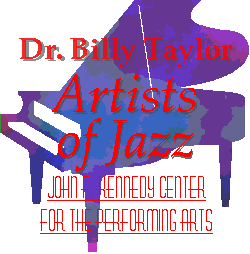
One of the original "rebels" of the bebop era, Monk's appreciation for early piano styles and his desire to express his personal ideas in pianistic terms led him to experiment with dissonance in a way that many musicians considered very unusual but strangely attractive. Monks playing was both unique and exciting. Coleman Hawkins, one of the few established band leaders of the 1940's who appreciated Monk's unconventional often iconoclastic style hired him; he also played with guitarist Charlie Christian. Bill Evans said of Monk, "We can be further grateful to him for combining aptitude, insight, drive, compassion, fantasy, and whatever makes the total artist. And we should also be grateful for such direct speech in an age of insurmountable conformist pressures." Today Thelonious Monk is recognized as one of the masters of jazz. (b. 10/10/17 Rocky Mount, NC, d. 2/17/82 Weehawken, NJ)
How did swing relate to the popular song form of the 1930s and 1940s?
What is Bebop? (with example from Monk's "52nd Street Theme" and "'Round Midnight")
What did piano players play to fit with the ensemble? (with examples played)
How is bebop influencing the artists of today's jazz, such as Wynton Marselis?
Show me a photo of Thelonious Monk. Despite his early struggles for acceptance, he will be recognized as one of the "Giants of Jazz" who will appear on a United States Postal Service stamp for release in 1995.
Here is an exerpt from Trinkle, Trinkle, recorded in 1957 by the Thelonious Monk Quartet, and featuring John Coltrane on the tenor sax; Wilbur Ware on bass, and Shadow Wilson on drums. This selection is from the soundtrack to the documentary motion picture "Straight, No Chaser" directed by Charlotte Zwerin, executive producer Clint Eastwood. The recording is Columbia CK 45358.